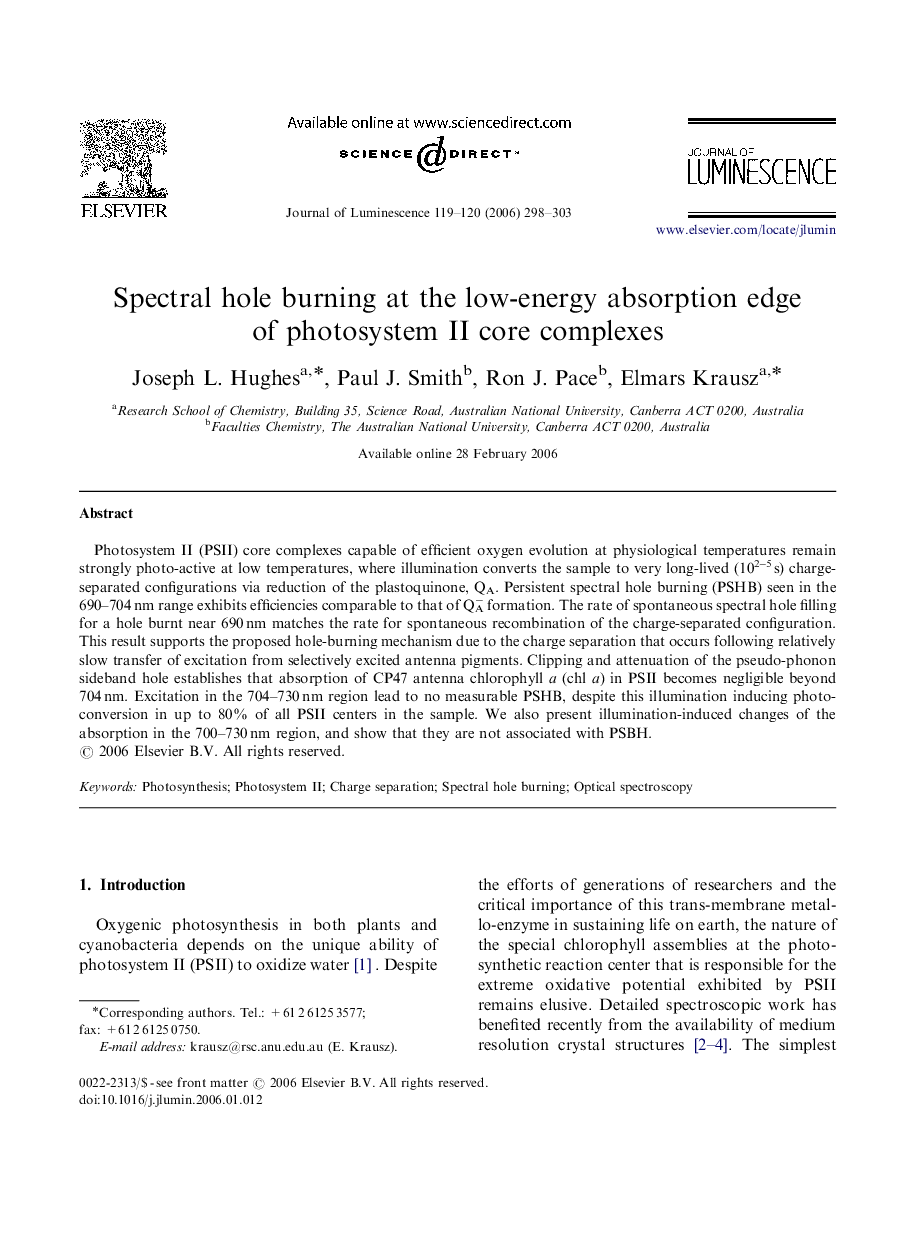| کد مقاله | کد نشریه | سال انتشار | مقاله انگلیسی | نسخه تمام متن |
|---|---|---|---|---|
| 5404191 | 1505932 | 2006 | 6 صفحه PDF | دانلود رایگان |

Photosystem II (PSII) core complexes capable of efficient oxygen evolution at physiological temperatures remain strongly photo-active at low temperatures, where illumination converts the sample to very long-lived (102-5Â s) charge-separated configurations via reduction of the plastoquinone, QA. Persistent spectral hole burning (PSHB) seen in the 690-704Â nm range exhibits efficiencies comparable to that of QAâ formation. The rate of spontaneous spectral hole filling for a hole burnt near 690Â nm matches the rate for spontaneous recombination of the charge-separated configuration. This result supports the proposed hole-burning mechanism due to the charge separation that occurs following relatively slow transfer of excitation from selectively excited antenna pigments. Clipping and attenuation of the pseudo-phonon sideband hole establishes that absorption of CP47 antenna chlorophyll a (chl a) in PSII becomes negligible beyond 704Â nm. Excitation in the 704-730Â nm region lead to no measurable PSHB, despite this illumination inducing photo-conversion in up to 80% of all PSII centers in the sample. We also present illumination-induced changes of the absorption in the 700-730Â nm region, and show that they are not associated with PSBH.
Journal: Journal of Luminescence - Volumes 119â120, JulyâOctober 2006, Pages 298-303